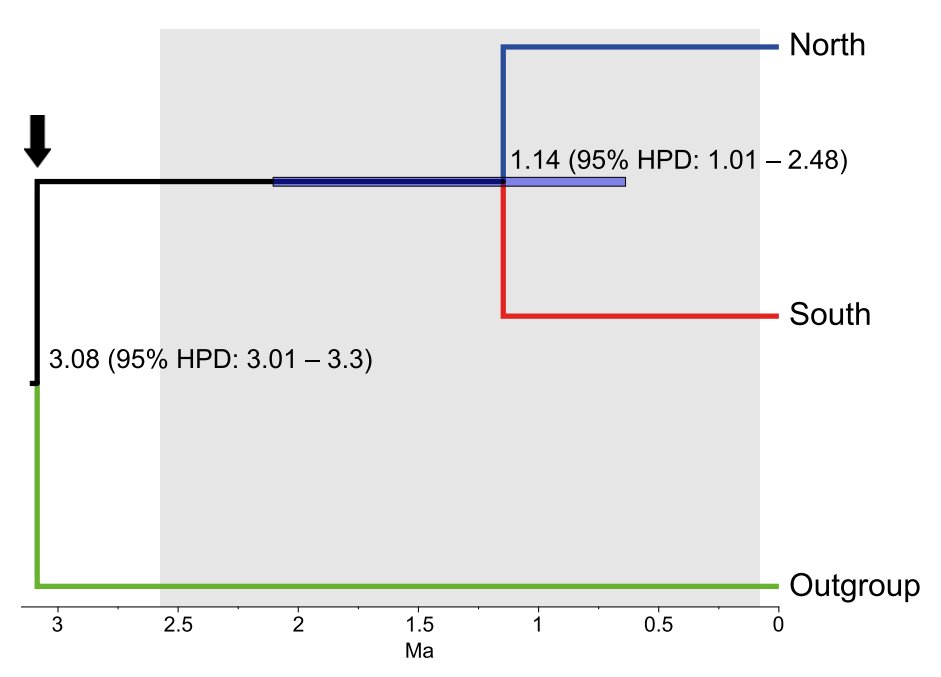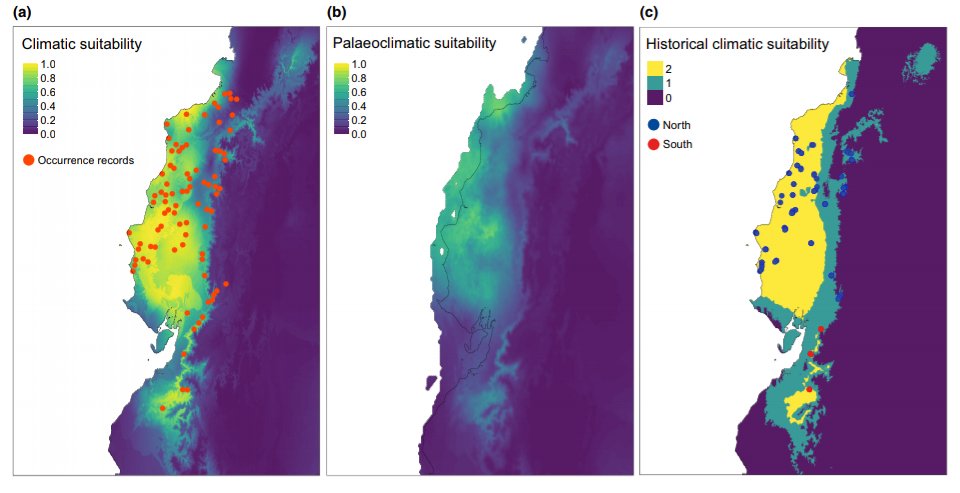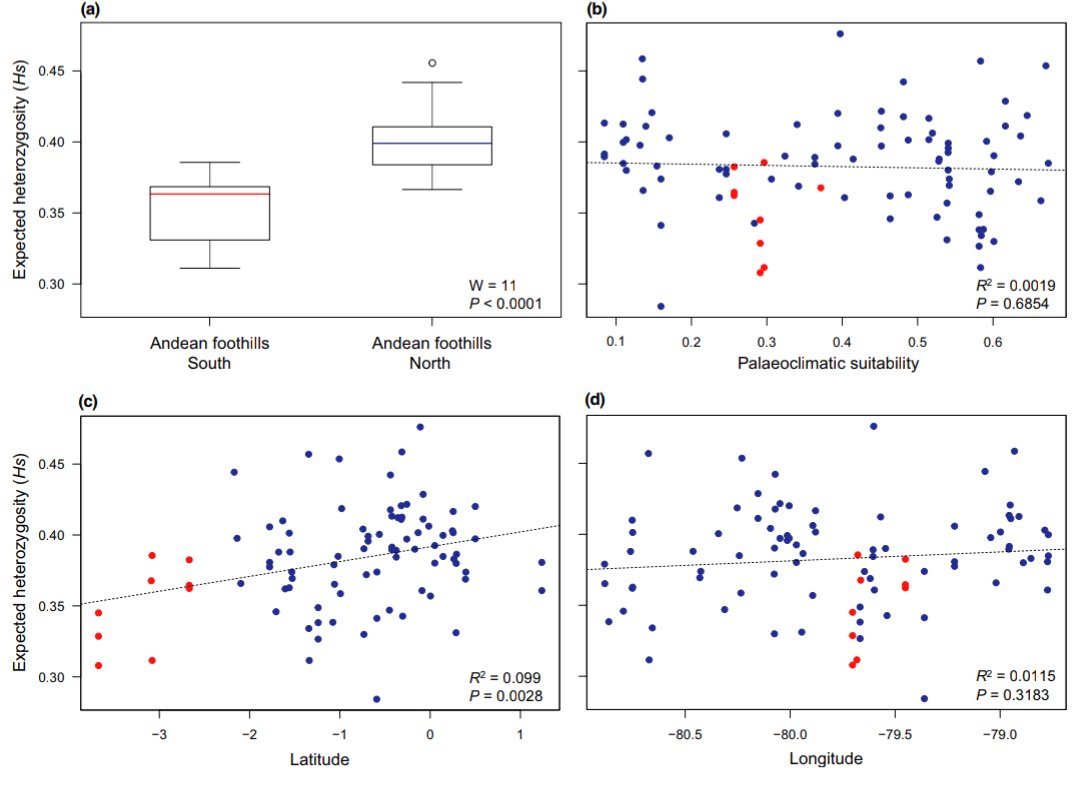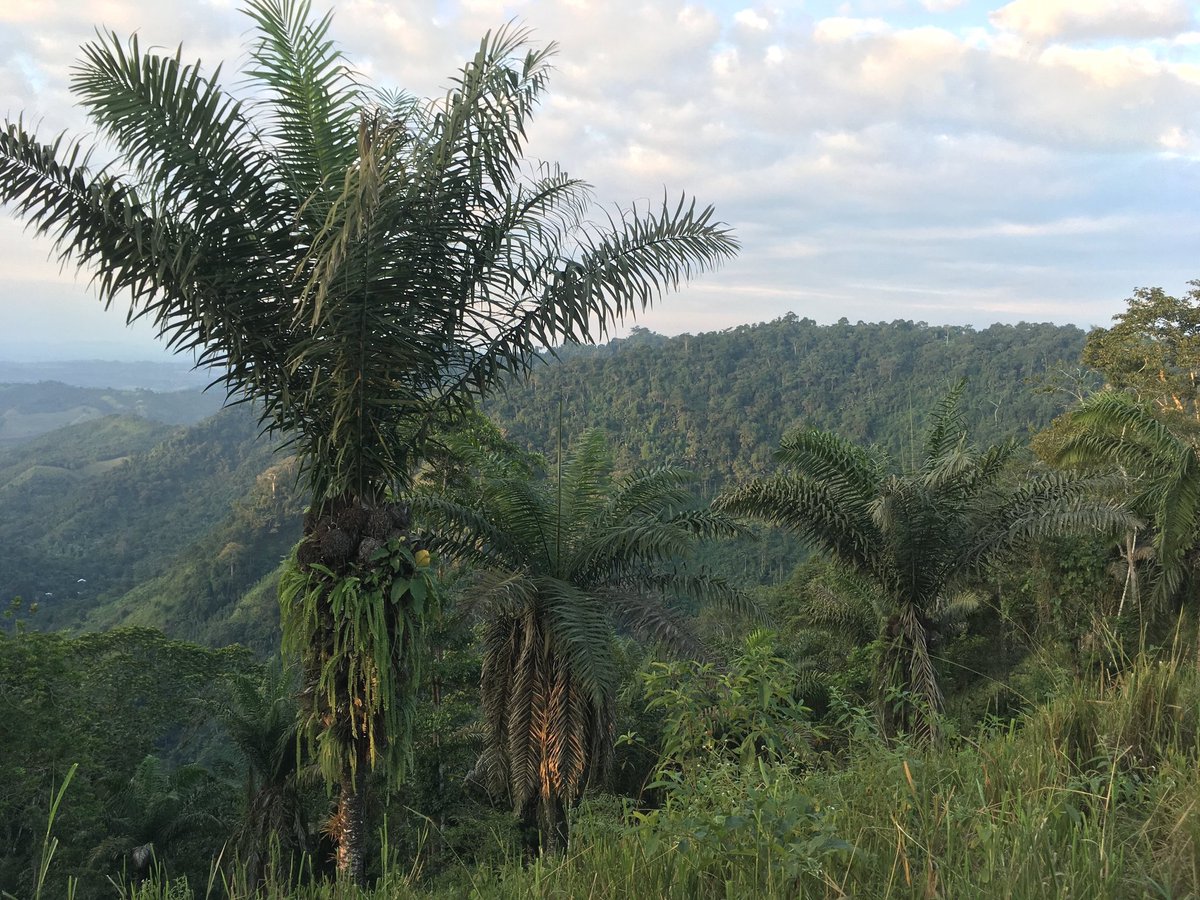The second paper from my PhD at @EcoinfAU @AarhusUni is finally out at @JBiogeography!
We explored the genetic effects of the #Pleistocene on an endemic #palm from the rain forests of western #Ecuador. @tlpcouvreur @rjmontufar @ajhelmstetter https://doi.org/10.1111/jbi.14055
We explored the genetic effects of the #Pleistocene on an endemic #palm from the rain forests of western #Ecuador. @tlpcouvreur @rjmontufar @ajhelmstetter https://doi.org/10.1111/jbi.14055
Based on phylogenomic and population structure analyses, we showed the presence of two genetic lineages with a north-south distribution and distinct evolutionary histories. Both lineages distribute on the Andean foothills, but only the northern one extends to the Pacific coast.
The two genetic lineages diverged during the Pleistocene ~1 Ma. This time characterized by the retraction of tropical rain forests, which promoted the isolation of populations and events of intraspecific divergence.
We inferred two areas that potentially acted as forest refugia during the Pleistocene whose distributions agree spatially with the two genetic lineages. This supports that intraspecific divergence occurred because of the isolation of populations during the Pleistocene.
In addition, we detected a significant increase of genetic diversity with decreasing latitude, suggesting that #Phytelephas aequatorialis colonized western Ecuador from north to south.
The Andean foothills of southwestern Ecuador could be an important area for rain forest evolution because they potentially remained climatically suitable during the Pleistocene. Thus, they should be preserved to maintain their unique genetic diversity. Ph: @rjmontufar
Thanks to everyone that helped along the way and to all the institutions that supported this research @AarhusUni @PUCE_Ecuador @cienciapuce @ird_fr @IPS_PalmSociety @EduSuperiorEc

 Read on Twitter
Read on Twitter






